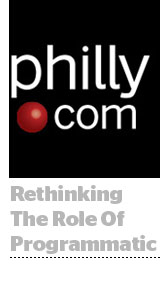 Among all the pros and cons of adding header bidding, one challenge is often not addressed: getting buy-in from senior sales leadership. The idea of programmatic competing against direct-sold impressions can be difficult to swallow.
Among all the pros and cons of adding header bidding, one challenge is often not addressed: getting buy-in from senior sales leadership. The idea of programmatic competing against direct-sold impressions can be difficult to swallow.
But local news site Philly.com, the digital presence of the Philadelphia Inquirer and Philadelphia Daily News, received that buy-in from senior leadership and the results paid off.
It added header bidding slightly more than a year ago, starting with OpenX and following with other partners. That key change grew programmatic from 12% of revenue two years ago to 30% of revenue today.
Philly.com positioned programmatic as its “second-most important salesperson,” not as a pipe for remnant inventory, said Martin Calhoun, director of digital advertising operations and yield management for Philly.com. That reflected the changing role of programmatic, from leftovers to audience-based selling.
With the senior sales management, the group most impacted by the change, Calhoun’s team worked through scenarios showing what would change if they added header bidding and prioritized programmatic deals.
“There is no reason why a programmatic campaign with a $20 CPM should not deliver over a local-sold campaign at a $7 CPM when there is enough inventory to satisfy both,” Calhoun said, referring to one of the examples the team discussed.
Working through these scenarios was “difficult,” Calhoun said. “But when everyone took themselves out of the equation and stopped worrying about their number but [instead] what was for best for the company, and thought about how that would trickle down and make their lives better, that’s when we got more buy-in.”
Programmatic now exists at two priority levels, one of which allows programmatic to beat direct-sold campaigns.
“We think that programmatic should have equal footing with a lot of the direct-sold,” Calhoun said. “Everyone on the staff understands it, and it’s not looked at as a bad thing.”
The team still monitors the switch to make sure that when programmatic wins, it’s providing “incremental gain, and not just the same basic rate through a different source,” Calhoun said. So far, “we get a lot more lift on the line items that compete with direct-sold campaigns, so we know it’s working.”
To further put programmatic on a level playing field, Philly.com cleared out its block lists as part of the switch. In the past, sales teams would often block direct advertisers from buying programmatically. Now salespeople use the programmatic advertiser list as a prospecting tool, Calhoun said.
“If a larger advertiser’s monthly direct spend eroded, and then they popped up through a programmatic buy, we don’t block that brand anymore,” Calhoun said. “We use the information as a door opener. We put together a proposal saying, ‘Your programmatic strategy is going well and we would like to work with you to get in front of the rest of that audience on Philly.com.’”
With programmatic accepted as an important, growing source of revenue, Calhoun has other projects on his mind. Philly.com just added another header bidding partner and is looking beyond header bidding for other ways to get ahead in audience-based buying.
One is figuring out the true worth of Philly.com’s audience, a task that’s trickier than you might think, Calhoun said. With its data management platform and supply-side platform, OpenX, it’s trying to predict the worth of audience groups on the site, from 50-year-old males to 20-year-old females.
Doing that will “help with advertiser goals, and that in turn is going to drive rate and yield.”
The more a publisher knows about its audience, Calhoun said, the more effective it will be able to optimize its programmatic revenue.












